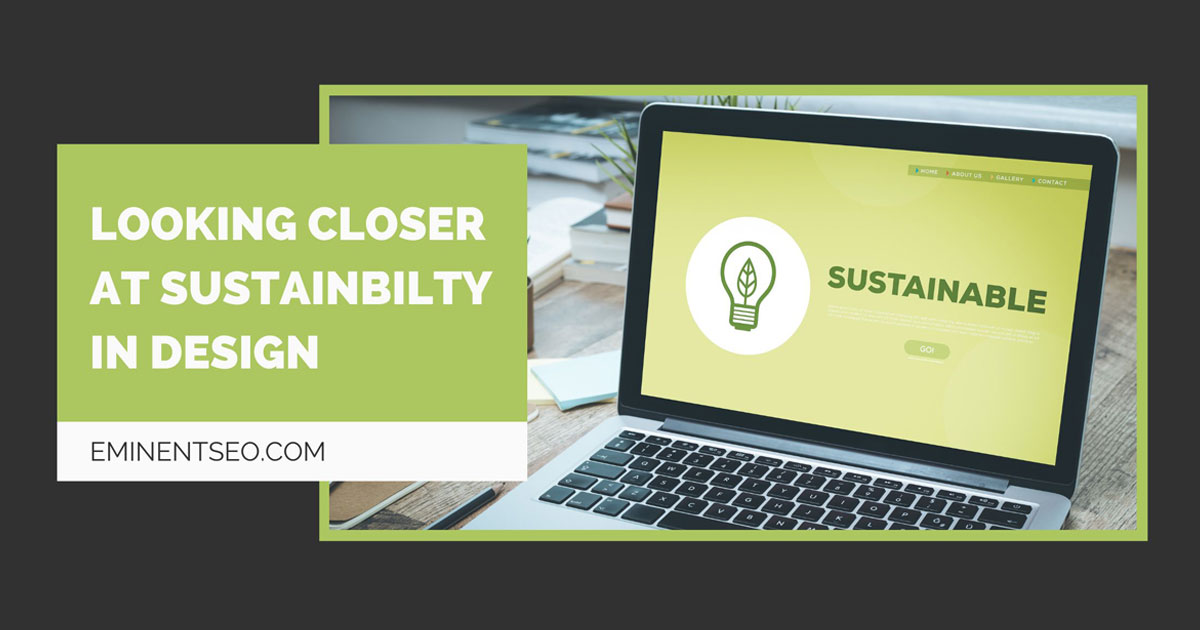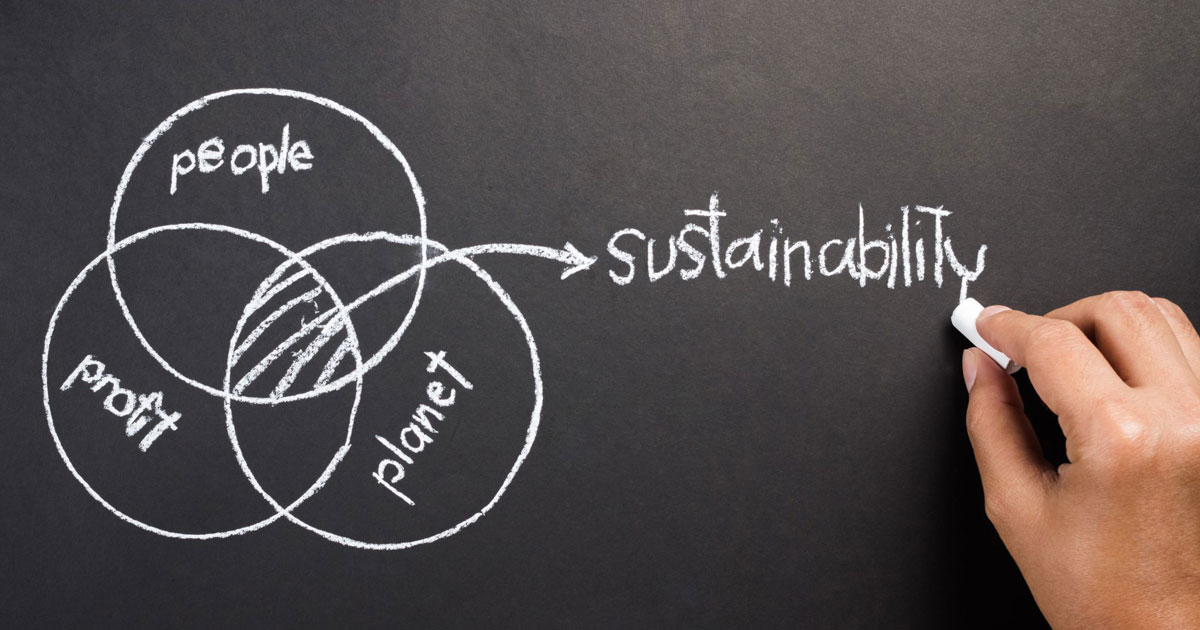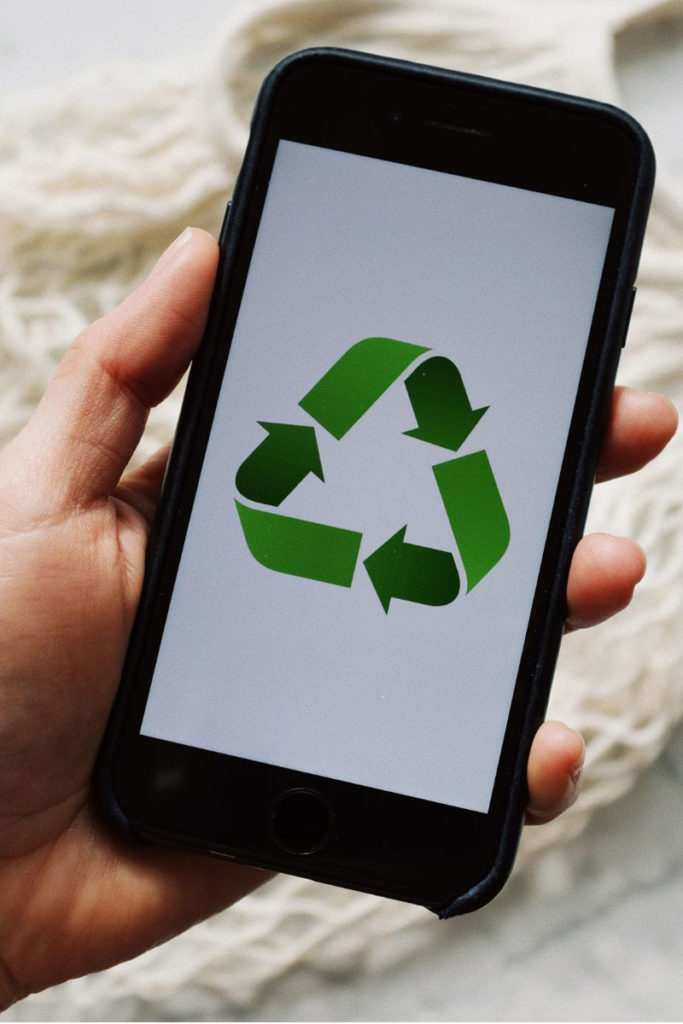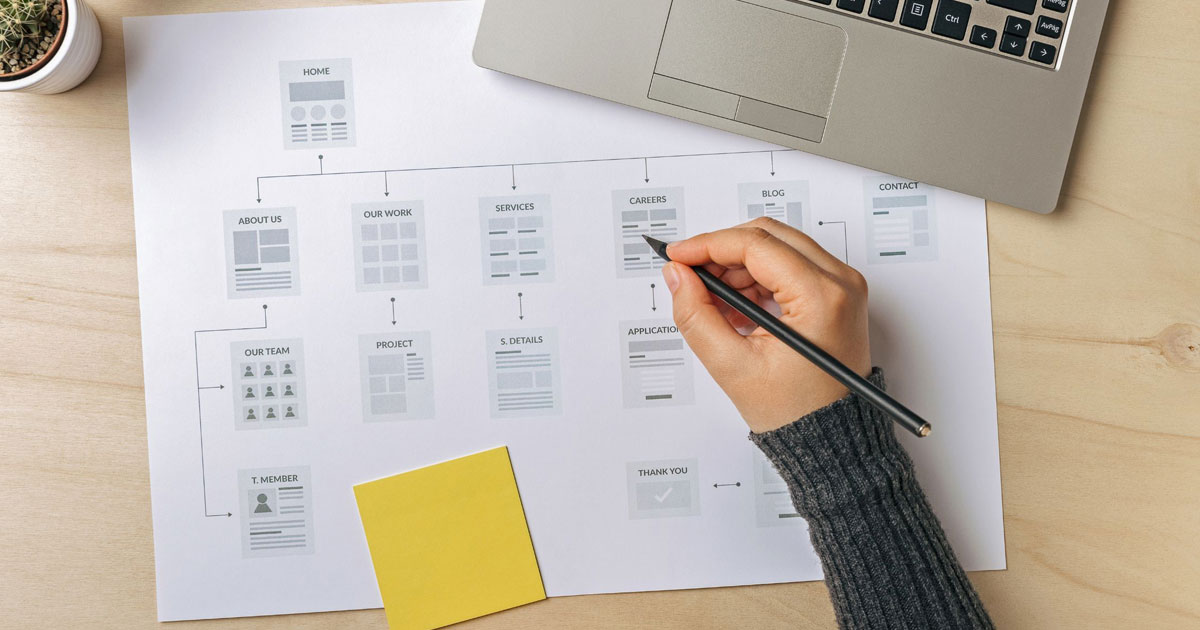Sustainability is a major focus across nearly every industry right now. Business leaders on a global basis, from small, service-oriented firms to major manufacturing faculties, are looking for ways to make their business models more sustainable. This trend is in direct response to a few distinct factors: supply chain uncertainties, ecological issues, resource scarcity, and public opinion.
Yet, even the most mindful companies sometimes forget that true sustainability is an end-to-end process requiring collaboration, both internally and externally. This means sustainability must be considered from the very first step of any new business venture. Often, that is the primary difference between an operation being truly sustainable and being superficially “green.” To have any impact on your bottom line or the greater societal project of less environmentally impactful living, “sustainability” must be more than a buzzword you add to the company policy handbook.
Thinking of Sustainable Design
In the world of business, sustainability has a straightforward and concrete meaning. Sustainability is an approach to doing business that is focused on creating long-term, comprehensive value. This is in stark contrast to the relentless pursuit of short-term, positive fiscal returns at any cost, which has defined the dominant American brand of capitalism for the last several decades.
The “triple bottom line” is a term that sometimes comes up during sustainable business discussions, and it refers to the idea that a company’s goals should prioritize not only strong financials but also giving back to both the people and the planet in a quantifiable way. This long-term value is achieved by considering many different factors, some of them quite nuanced.
These include:
- The ecological impact of doing business and how to mitigate it. This can involve choices regarding materials, suppliers, shipping options, company travel policies, and more.
- How the business treats the communities from which it draws its customers and employees. A sustainable business should be re-investing a percentage of profits directly into local community programs and paying their employees a sufficient wage to allow them to better their own neighborhoods and families.
- How the business or brand interacts with society at large.
- A focus on longevity, both for individual products in an effort to reduce waste and for the company as a whole. Long-term planning should be done with the assumption that the company will remain viable for a long time, implementing long-term strategies that are a net positive for the world they operate within.
- Sustainable, intelligent design of new products and services, including making design choices with an end-to-end focus on sustainability.
Getting Started with Sustainable Design
Some people are surprised to learn that even a fully digital venture (for example, a website that sells only virtual goods like PDF e-books) can be designed with an eye toward sustainability. However, we’ve been thinking about sustainability for years.
Sustainable Web Design
Web design experts know that sustainability often starts on the web. Sustainable web design is usually achieved with simple, clean designs that won’t draw more processing power, bandwidth, or other electricity-devouring system resources than necessary on either the server side or the end user’s machine.
Sustainable Logistics
Ecommerce website operators can consider sustainability both when designing their website and when constructing the logistical side of their operation. This may sound like it requires a daunting overhaul of the entire operation, but sustainable logistics for a small ecommerce operator can be simpler than you think.
Sustainable Design
One aspect of sustainability that is sometimes overlooked in all of this is sustainable design. Sustainability concepts can be readily applied to the design process for new products, systems, and facilities, from the raw materials used to create them to the environmental impact of their end-use. Sustainable design has the potential to make the world better for everyone.
Sustainable design is a concept that can take us back to our roots, both figuratively and literally. In contrast to the larger arc of technological progress throughout history, today’s sustainable designers often look to the past. They use it to draw lessons from a time when products like appliances, vehicles, and consumer electronics were made to last decades rather than needing to be upgraded every few years.
Sustainable design also connects us with our “roots” in a literal sense. Often, sustainable companies look to plant-based materials for solutions to sustainability issues in the supply chain. For example, versatile, environmentally friendly, and easy-to-grow crops like hemp can be made into everything from cloth to biodegradable plastic.
While it seems like everyone in every industry is at least talking about sustainability, actions speak louder than words. We still have a long way to go when it comes to reaching a point of true ecological and economic balance in most business models. Making a conscious effort to design products and services with an eye to sustainability from the very earliest steps can make an enormous difference. Your efforts can bridge the gap between lofty long-term goals and living in a greener world where we can feel good about the products we choose.
The Benefits of High-Quality Sustainable Design
A true global transition to a more sustainable way of doing business will require a great deal of change. Despite historical evidence proving that change is the only constant in the market, many business operators are resistant to change. That’s particularly true of those who have seen long-term success under “old school” models of doing business. The simple reality is that many products, processes, and systems will need serious redesigning to incorporate emergent methods for achieving or moving toward sustainability.
By committing to sustainable design, companies have an opportunity to position themselves as leaders in this inevitable paradigm shift that has already begun. In doing so, forward-thinking companies will foster a culture of innovation, creativity, positivity, and collaboration among employees, suppliers, and peers in the industry.
Here are six clear, material benefits to focusing on sustainable business today.
1. You’ll Reduce Energy Costs
It’s no secret that investing in the infrastructure to make your business processes more sustainable can be an expensive challenge. This is one reason many business owners are resistant to pivoting towards sustainable models. However, it’s important to remember that “going green” isn’t all about leafy trees—it can also refer to your wallet. Creating more fuel-efficient and electricity-efficient products and installations will benefit you and your customers via saved energy costs. As fossil fuels become scarcer, installations relying exclusively on traditional energy sources could see themselves priced out of existence.
2. Sustainability Is a Scalable Project That’s Simple to Launch
You don’t have to begin with a complete overhaul of your facilities, production, and product line to begin being more mindful of sustainability. Instead, you can start by taking on smaller projects, like installing resource-efficient lighting and water fixtures. Then, address any immediate supply chain or shipping schedule issues and implement the necessary fixes. National governments break their energy transitions down into long-term, multi-year phases to make the timeline more manageable—and your business can do the same. After all, a focus on sustainability means you expect your brand to be around for a long time.
3. You’ll Work with Forward-Thinking Employees
Today’s young workforce has an all-time low interest in “grinding” 9 to 5 jobs defined by cubicles and busy work. In fact, many of the most qualified professionals and eager job seekers of Generation Z and the Millennial generation are only interested in accepting job offers that put them in a position to do positive, impactful work. Positioning yourself as a leader in sustainable design in your industry means you’re doing impactful work and hiring innovative employees.
4. You’ll Receive Attention from Forward-Thinking Investors
Savvy investors with a long view of the economy understand how crucial it is for businesses to pivot to sustainable models. In part, pivots are necessary to avoid nightmare scenarios, such as an energy crisis and an ensuing market crash. You want to work with intelligent, ethical business partners, and branding yourself as a leader in the sustainable design space can help you make those connections.
5. You’ll Encourage Innovation
A comprehensive transition to a sustainable business model means that you’ll need to revisit or completely redesign all sorts of systems and processes within your operation. Viewing your business from this new perspective and considering radical change will naturally create opportunities to improve your business model in other ways. This encourages creativity among your employees and contractors as well as increased collaboration with your vendors and business partners.
6. You’ll Future-Proof Your Regulation Compliance
Transitioning to a sustainable business model right now means you’ll be ahead of the curve. This will become especially important as government regulators, and national accords continue to tighten the screws regarding emissions and renewable energy goals. Someday, while your competitors are struggling to quickly implement filtration technologies or change their long-time business processes to remain compliant with new regulations, your firm will be able to carry on with business as usual.
Sustainability and Your Brand
Your brand is the face your company shows the world, so when you and your team shift focus to a sustainable future, your brand should reflect your commitment. The story your brand tells the public should highlight your successes and plans in the environmental, economic, and social justice arenas.
Effective sustainability branding means your customers will leave your website, social media feed, or store with a clear understanding that your business model is about more than just profits.
Building a Sustainable Brand
One of the best ways to begin building a sustainable brand is to study the masters. Think of brands known for their environmental or social justice efforts, such as Patagonia and Ben & Jerry’s. Study the public face of these brands in a systematic way, analyzing everything from their social media style to their product and packaging design.
Because branding and brand design are deeply individual concepts, your brand won’t (and shouldn’t) be the same as anyone else’s. However, there are business leaders all around you who are active in social and environmental justice issues. They can offer some great examples of which messages and activities resonate with the public.
In general, a sustainable brand begins with a genuine effort to boost your company’s sustainability and continues by telling that story in the most effective way possible for your target audience.
Applying Sustainability Concepts to Online Design
While it may seem like sustainability is a push aimed at oil companies and factories, even the smallest small businesses can make smart, sustainable choices and position their brand as a leader in economic, social, and environmental justice. As mentioned, that concept still applies to e-business. If your operation exists solely or mostly online, here is a checklist of things you can do to join the march forward to sustainability.
Identify Areas for Improvement & Innovation
Even if you are a one-person operation that exists only as a website, you can find opportunities to improve your own sustainability practices. Consider turning off non-essential computers at night or donating a percentage of all profits to a local community organization. For larger businesses, the opportunities to identify ways you can do better will be nearly limitless.
Leverage Eco-Friendly Technologies & Materials
While online-only businesses do not typically consume large amounts of raw materials, tech impacts your energy consumption more than you’d think. Make sure your computers and servers (or the company you work with to outsource your server needs) are up to modern energy efficiency standards. You can ensure any suppliers or business partners you’re working with are doing a good job in this area.
Implement Appealing Visuals That Are Accessible to All Users
Make sure your website is accessible to people with vision, cognitive, or other health issues that can make web navigation difficult. You should also ensure your website works well on all sorts of devices—don’t merely optimize it for the latest and greatest phone. Ensuring your content is widely accessible is key to the social justice aspect of sustainability.
Creating an Engaging & Educational User Experience (UX)
To position yourself as a sustainable brand, you must tell your story effectively. For online businesses, this begins by displaying a website that is pleasant to visit. However, don’t limit your web presence to bragging about how sustainable and forward-thinking you are. You can use your website to do actual sustainability work by posting great content that educates and empowers the public.
Implement Measures for Automated Efficiency and Compliance with Relevant Regulations & Guidelines
As renewable energy technology speeds forward over the next decade, so will the associated government regulations. Now is the time to implement a company-wide policy that ensures regulations and standards are being revisited and addressed on a regular basis. You can also develop similar systems and policies to ensure your new processes are as sustainable and efficient as you designed them to be.
Minimize Waste & Resource Consumption
Waste can refer to the unnecessary disposal of several resources, both tangible and intangible. Fuel, money, raw materials, time, and employee potential are all potential areas where more effective waste management can impact overall sustainability. You should also strive to minimize waste in the most literal sense, by reducing the amount of trash and other byproducts your operation generates. While not usually considered a key issue for online-only businesses, it’s one where minor changes can be meaningful over time.
Create Lasting, Sustainable Products
If your brand sells a tangible product, the best thing you can do is create lasting products that will stand the test of time. Preventing excess waste from entering our landfills due to shoddy manufacturing or trendy, disposable goods is the responsibility of every business owner. The best part? Your brand will reap the benefits of gaining notoriety for selling quality products consumers will own for years to come.
Better Design: The Key to a Sustainable Future
Sustainable design has become an essential element of business strategy. Eminent delivers digital design and SEO services that my partner and I started back in 2009. It’s always been part of our mission to provide a higher quality service in a more sustainable way.
We aim to steer our clients and their customers toward a future where the web experience is clean, functional, and accessible. Using an organic focused approach, we create long-term strategic marketing plans for our clients that have lasting ROI.
Thin content. Gray-hat strategies. Shortcuts. That’s for the “get rich quick” crowd… and has no place in SEO. If you want to create a sustainable campaign for your brand, you have to think about what really makes it sustainable in the first place.






